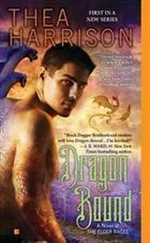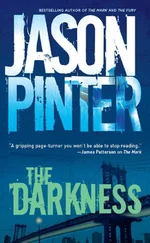“Oh hell.” He bent forward, kissed the air by her cheek and dashed out of the house.
Mary moved to the large living room window to watch with narrowed eyes as he drove away. She tapped a fingernail against the glass. “You can come,” she whispered to his retreating car. “But I’m not going to be around when you get here.”
* * *
SHE FOLDED HER laundry, put it away and straightened her bed. There was another load of colorful cloth scraps waiting in the laundry room. After she put the scraps in the washing machine, she tidied the living room.
Since she lived alone and the two-bedroom house was more than big enough to suit her modest needs, she used the living room as one of her workrooms. She had four quilts in varying stages of completion. The most colorful piece, by far, was the patchwork crazy quilt. She fingered the cloth, but the quilt wasn’t speaking to her. It seemed a lifeless fact, separate from her existence, as though some stranger had left it in her house.
She moved down the hall to the second bedroom, which she had turned into a studio. There she spent two hours trying to capture on canvas something of the elusive imagery from her dream.
Those creatures had shone from within. The colors that had shifted within their bodies and flowed outward in whorls of light were too delicate and strange for her to capture on paper. The colors seemed indicative of emotion or personality, as if the creatures had senses so different from humans, they could actually see the pheromones their bodies released.
She had been plagued with strange dreams for as long as she could remember. The one she had labeled the sacred poison dream was only one of several that recurred on a regular basis. Sometimes the details of the sacred poison dream were vague or just different, but several details remained constant. There were seven people or creatures, of whom three pairs were mates, and an escaped criminal. They always drank poison, and she always felt terror and a sense of appalling loss when she awakened.
She shook her head and frowned. Some people believed each person had a soul mate, but she didn’t. The concept was too convenient, too romantic, without real substance. Since she didn’t believe in it, she could never understand why that was a major recurring theme in her dreams.
People met other like-minded people because they shared things in common and engaged in similar activities. Birds of a feather really did flock together. Either that, or they met by accident.
At least she could be grateful that, no matter how violent or overwhelming the sense of loss might feel in the aftermath of the sacred poison dream, it held her in its grip for only a brief time before fading away. No one could endure that kind of raw anguish for long, at least not that Mary had witnessed. People seemed to suffer intense grief in waves.
When she had been a child, the dreams had not been as intense or vivid, but they had always been unsettling. They had gained in color, detail and emotion as she had grown older.
As a med student at Notre Dame University, in an attempt to put whatever demons existed inside her mind to rest, she’d taken advantage of the counseling offered through the university. For over a year, she and her counselor had explored her childhood and the possible symbolism involved in the dream imagery.
Justin was right. She had lived an entirely normal childhood. She had fallen out of trees, tripped and misspoke in school plays, made cupcakes for bake sales and had sleepovers with friends. She remembered her childhood with detailed clarity. Other than the death of her parents when she was fourteen, there was simply nothing for her to be haunted about. Even then she had gone to live with a loving aunt who had been attentive to the needs of a grief-stricken child.
She wasn’t interested in sex, although for a while she wanted to be. The concept, while intriguing, was less than compelling in execution. Instead of finding intimacy to be emotionally and physically rewarding, she felt clinical, detached and rather repulsed by the act, and she loathed casual dating.
At first she had been relieved that Justin hadn’t seemed to be very interested either in physical intimacy. During their marriage, their sexual relationship had been perfunctory at best. When he had finally faced the truth about himself and admitted that he was gay, she had made an almost seamless adjustment into the role of supportive friend. Their split-up had been a relief for the both of them.
She had tried for a brief time to blame her tendency to isolate on the early loss of her parents, but she couldn’t convince herself for long. There was a reason why she didn’t have a social life, and it wasn’t just because she had a hectic job with irregular hours.
She just knew she had this desperate need for . . . something . . . but she couldn’t figure out what it was. She only knew that other people couldn’t give it to her. She had to find a way to heal herself, to fill her own needs. Maybe then she could make a meaningful connection outside of herself.
When she realized that the therapy didn’t seem to be leading anywhere, she had terminated the sessions. Then she got accepted into med school, and she and Justin divorced. Now she lived in her ivory tower. As far as she could tell the attempt at counseling had been a complete failure.
The painting she was trying to work on was a failure as well. No matter how she tried she couldn’t replicate the impression from her dream.
She lifted the canvas from the easel and set it against one wall to dry. Then she took up sketchpad and pencils, hoping that the change in medium might help her convey some of the delicacy that she could see so clearly with her mind’s eye.
As she worked, an old memory shook itself out of a dark recess in her mind. She paused to let it solidify.
She had always drawn as a child. As soon as her fingers were big enough to clutch a crayon she would draw, over and over again, people in cages.
It became an elaborate secret project over the years. The people acquired names and personalities. They had rooms in their prisons. She would draw crude beds, chairs, bookcases, kitchens, all behind bars. They were her people, and she would never let them go.
Over time, she had stopped with that obsession but she had never spoken of it to anyone, and she’d always destroyed the pictures with a hot sense of shame. What kind of monster was she to daydream about caged people?
Seven. Her breathing hitched. She had always drawn seven people.
How could she have forgotten that?
She sketched, her movements slow as she struggled past the adult’s acquired finesse to approximate something of the child’s crudity as she worked to recapture the details from years ago. A simple triangle of an ankle-length dress, the long sleeves, the curl of hair . . . she hesitated at the hem of the dress and her forehead wrinkled. If she remembered right, she had never drawn hands or feet.
Her college counselor would have had a field day with that imagery. She shut the sketchbook with a sharp slap.
THE DAY WAS filled with blades.
The thin spring sunlight knifed through budding leaves on trees. Sharp yellow light and green shadows surrounded the old woman as she tore slender shoots of weeds from the garden bed by her front door. She regarded the dark and light that dappled her gnarled hands, savoring the fugitive promise in the sunlit warmth even as a frigid wind blew off the lake and tore through her battered jacket with invisible talons.
Breathing deep, she lifted her face and sat back on her heels. The serrated wind held a hint of moisture from the vast, restless body of nearby water, the trace of perfume from early wildflowers, the scent of pine and damp loam, and news.
Читать дальше











